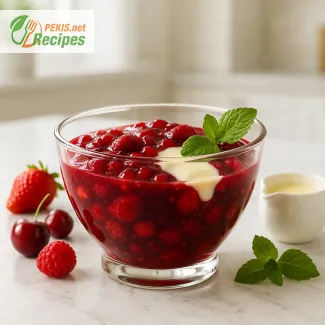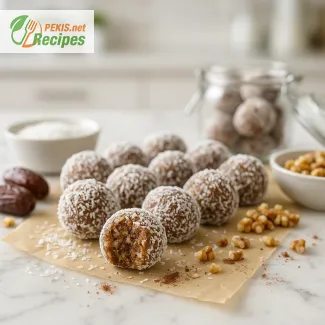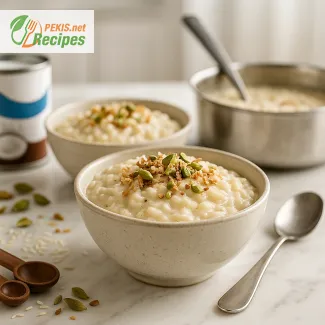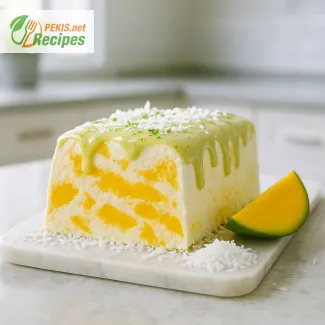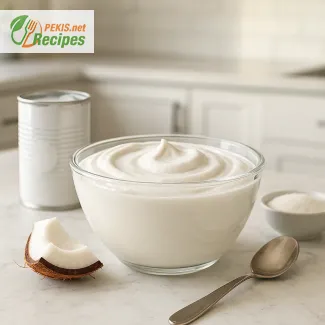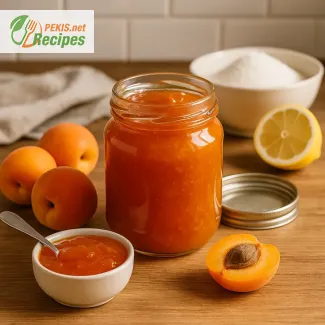
Traditional Fruit Preserving at Its Best: How to Make Apricot Jam Like a Pro
Discover the Simplicity and Charm of Homemade Apricot Preserves
Nothing captures the essence of summer quite like a jar of apricot jam. With its vibrant golden hue, naturally sweet aroma, and rich fruity texture, this classic preserve remains a staple in kitchens around the world. While store-bought versions are widely available, homemade apricot jam offers an unmatched depth of flavor, free from additives and tailored to your personal taste.
In this professional guide, we delve into the art of apricot jam making using only a few ingredients and a straightforward approach that even beginners can master. Whether you're a seasoned home cook or just exploring the world of preserving, this method delivers consistently delicious results. The process is rooted in tradition but refined for today’s modern kitchen.
Why Apricots Make Exceptional Jam
Apricots are one of nature’s most perfect fruits for jam-making. With their high pectin content, they naturally thicken without the need for artificial additives. Their balance of tartness and sweetness allows them to shine with minimal added sugar. The fruit’s soft flesh breaks down beautifully during cooking, creating a silky consistency that spreads easily over toast, pairs delightfully with cheese, or elevates baked goods with a burst of fruity complexity.
Fresh, ripe apricots—preferably seasonal and locally sourced—are ideal for jam. Their rich orange color deepens during cooking, producing a jam that is visually appealing and bursting with flavor. Dried apricots, while also delicious in other recipes, do not offer the same freshness or texture and are not recommended for this preserve.
Key Qualities of a Perfect Apricot Jam
When properly prepared, homemade apricot jam should be glossy, slightly translucent, and smooth with occasional small chunks of fruit. The flavor should lean fruity rather than sugary, highlighting the natural essence of apricots. It should set gently—firm enough to stay on a spoon, but soft enough to spread without tearing bread.
Achieving this texture is possible without commercial pectin, thanks to the natural pectin in apricots and a precise balance of sugar and acid. This approach results in a cleaner, more authentic taste and a better mouthfeel than highly processed alternatives.
Common Mistakes to Avoid When Making Apricot Jam
To make apricot jam successfully, avoid overcooking the fruit, which can lead to caramelization and bitterness. Undercooking, on the other hand, results in a runny or unstable jam. Striking the right balance between heat, time, and stirring is key. Another frequent error is neglecting the importance of sterilizing jars properly, which can compromise shelf stability and flavor integrity.
Additionally, using underripe apricots can yield a flat or overly tart jam. Choose ripe, fragrant fruits with a slight give when pressed, avoiding any that are bruised or overly mushy. The use of lemon juice is not just for flavor—it helps balance sweetness and preserves the bright color of the jam.
Ideal Uses for Apricot Jam
The versatility of apricot jam is one of its greatest strengths. It’s a natural fit for breakfast dishes such as buttered toast, croissants, or yogurt parfaits. In baking, it can glaze fruit tarts, fill sponge cakes, or add moisture to layer cakes. In savory cooking, it pairs surprisingly well with roasted meats, especially pork and poultry, offering a sweet contrast to rich flavors.
Its balance of acidity and sweetness also makes it a favorite component in cheese platters, particularly when served with soft or tangy cheeses like goat cheese, Brie, or blue cheese. For those seeking to reduce processed sugar in their diet, this jam can even be used as a natural sweetener in smoothies or oatmeal.
How Long Does Apricot Jam Last?
Properly sealed and stored in sterilized jars, homemade apricot jam can last up to one year in a cool, dark pantry. Once opened, it should be refrigerated and consumed within 4–6 weeks for best flavor. The sugar acts as a natural preservative, but cleanliness during preparation is crucial to prevent spoilage.
For added security, some home cooks process their jars in a boiling water bath, which creates an airtight vacuum seal. While optional, this step extends shelf life and enhances safety, especially if making large batches.
The Difference Between Apricot Jam, Jelly, and Preserves
Although these terms are often used interchangeably, they refer to distinct styles of fruit spreads. Jam is made by cooking crushed fruit with sugar, resulting in a soft and slightly chunky consistency. Jelly uses fruit juice only, yielding a clear and smooth spread. Preserves contain larger pieces or whole fruits suspended in syrup, offering a more textured bite.
Apricot jam strikes a perfect balance—its delicate texture showcases the fruit while remaining smooth enough to appeal to all ages. It’s the most popular choice for general use and ideal for both sweet and savory applications.
Essential Tools for Making Apricot Jam
Making apricot jam at home doesn’t require specialized equipment, but having the right tools can simplify the process. A heavy-bottomed saucepan ensures even heat distribution and prevents scorching. A long-handled wooden spoon or silicone spatula is useful for stirring. A kitchen thermometer, while not mandatory, helps confirm when the mixture reaches the ideal setting temperature (around 105°C / 221°F).
You’ll also need sterilized jars with tight-fitting lids. A ladle and funnel make transferring hot jam easier and cleaner. If you’re canning the jam for long-term storage, a canning rack and pot for water-bath processing are recommended.
Preparing Apricots for Jam
Wash apricots thoroughly, remove any blemishes, and halve them to discard the pits. There’s no need to peel them—the skin adds subtle texture and helps with setting due to its natural pectin. For a smoother consistency, some prefer to finely chop the fruit or briefly pulse it in a food processor before cooking.
If you like small chunks in your jam, simply cut the apricots into quarters or sixths. As they cook down, the pieces will soften and meld into the jam without becoming too uniform.
Sugar-to-Fruit Ratio: Finding the Right Balance
The classic ratio for fruit jam is 1:1 by weight (e.g., 1 kg apricots to 1 kg sugar), but this can be adjusted based on taste and desired consistency. Using less sugar creates a more tart and fruit-forward jam, but it may reduce shelf life and affect the set. Lemon juice or zest adds brightness and acidity, supporting the setting process and enhancing flavor.
Some prefer to let the fruit macerate with sugar for a few hours before cooking. This draws out natural juices and reduces overall cooking time, preserving more of the fruit’s fresh aroma. It also helps dissolve the sugar evenly, preventing crystallization.
The Joy of Homemade: A Culinary Tradition Worth Keeping
Making apricot jam at home is more than a recipe—it’s a connection to culinary heritage and a celebration of seasonal produce. It’s an invitation to slow down, savor each step, and create something lasting. Whether you’re preserving a backyard harvest or reviving a family tradition, this time-tested preserve brings the warmth of summer to your table all year round.
- Prepare the jars
Wash 4 clean glass jars (200 ml each / 7 fl oz) and their lids with hot soapy water. Rinse thoroughly and place them in a preheated oven at 100°C (212°F) for at least 15 minutes to sterilize. Leave them to cool slightly while preparing the jam. - Wash and cut the apricots
Rinse the apricots well under cold running water. Pat dry. Cut each apricot in half and remove the pit. Leave the skin on for added pectin and flavor. Dice the apricots into small pieces for faster cooking. - Macere the fruit
In a large, heavy-bottomed pot, combine diced apricots and sugar. Let sit for 30 minutes to 1 hour to allow the sugar to draw out the fruit juices. Stir occasionally. - Cook the jam
Add the lemon juice and water to the fruit mixture. Bring to a gentle boil over medium heat, stirring constantly. Once boiling, reduce the heat slightly and let it simmer uncovered for 30–40 minutes, stirring regularly to prevent sticking. Skim off any foam that forms on top. - Test the consistency
To check if the jam is ready, place a small spoonful on a chilled plate. After 1 minute, run your finger through the jam. If it wrinkles and holds shape, it’s ready. If not, simmer a few more minutes and test again. - Fill and seal the jars
Carefully ladle the hot jam into sterilized jars, leaving about 1 cm (½ inch) of headspace. Wipe rims clean with a damp cloth. Seal tightly with lids. Invert jars for 5 minutes, then place upright and allow to cool completely at room temperature. - Storage
Once cooled, store in a cool, dark place. Refrigerate after opening and consume within 4–6 weeks.
Elevating Your Apricot Jam: Creative Twists for a Better Homemade Preserve
Expert advice on variations, ingredient upgrades, and achieving perfect texture
Homemade apricot jam already has the charm of simplicity and tradition, but even timeless recipes can be enhanced with thoughtful touches. By adjusting ingredients or refining techniques, you can achieve a unique, healthier, or more gourmet result while still honoring the essence of the original. Whether you're making jam for personal enjoyment, gifting, or long-term pantry storage, the suggestions below will help you go beyond the standard recipe and craft a preserve that reflects your personal taste and culinary skill.
The power of small additions: flavor boosters that enhance the final jam
Adding a few complementary ingredients to the base recipe can completely transform the flavor of your apricot jam. These ingredients don’t just mask the apricot—they highlight it.
Vanilla bean or extract
Stirring in half a teaspoon of pure vanilla extract or the seeds from one vanilla bean pod during the last 5 minutes of cooking adds a warm, floral undertone that deepens the flavor without overpowering the apricots.
Fresh herbs
For a subtle aromatic twist, add a small sprig of rosemary or thyme to the pot while the fruit cooks. Remove it before jarring. These herbs lend complexity and pair well with both sweet and savory uses of the jam.
Ginger or cinnamon
A pinch of ground cinnamon or grated fresh ginger brightens the jam with spicy warmth. This addition is especially pleasant in colder months or when using the jam in baked goods.
Citrus zest
Adding lemon, orange, or even lime zest lifts the flavor and complements the natural acidity of the apricots, intensifying their brightness.
Choosing sugar alternatives: healthier sweetening without compromising texture
If you prefer a less sweet preserve or wish to reduce refined sugar intake, you can modify the recipe accordingly.
Honey
Replace up to half the sugar with mild-flavored honey for a richer, smoother taste. Keep in mind that honey is more hygroscopic (it retains moisture), so the final jam may have a softer set.
Coconut sugar or raw cane sugar
These unrefined sugars offer a deeper caramel note and contain trace minerals. The jam will be darker in color and slightly less translucent but still flavorful.
Stevia or erythritol
These sugar substitutes can be used in low-sugar versions, but since they lack the setting properties of real sugar, you’ll need to supplement with pectin or extend the cooking time to reach the desired consistency.
Texture mastery: controlling thickness and chunkiness
Perfect apricot jam should strike a balance between spreadability and a satisfying texture. Here’s how to control both:
For a smooth jam:
Use an immersion blender or food processor to puree the apricots before cooking. Strain the mixture through a sieve if you want a jelly-like consistency without visible pulp or skin.
For chunkier jam:
Chop only half of the apricots and leave the rest in larger pieces. Stir gently during cooking to avoid breaking them down completely.
Use of apple or citrus pectin:
If your apricots are slightly underripe or lack natural pectin, consider adding grated green apple or using a teaspoon of natural citrus pectin. This ensures a proper set without altering flavor.
Why homemade apricot jam is worth the effort
Preparing apricot jam from scratch gives you complete control over quality and ingredients. Store-bought versions often contain preservatives, high-fructose corn syrup, and artificial flavorings. By making your own, you ensure freshness, eliminate unnecessary additives, and customize the flavor to suit your preferences.
Additionally, the cooking process releases a vibrant aroma that fills your kitchen and adds to the sensory joy of preparing food. It’s a ritual that connects you to generations of traditional preserve makers while allowing room for personal creativity.
Common pitfalls and how to avoid them
Overcooking the fruit
When jam is cooked for too long, the sugar can caramelize and alter the flavor, leading to bitterness. This also affects the color, turning the jam darker and less appetizing.
Skipping the resting period
Allowing the jam mixture to macerate before cooking enhances natural juiciness and promotes even sugar distribution, which leads to better texture and flavor.
Poor sterilization of jars
Even a small lapse in cleanliness can result in spoilage. Always sterilize jars thoroughly and seal them while the jam is still hot to ensure safe storage.
Incorrect fruit-to-sugar ratio
Too little sugar may result in spoilage, while too much will overpower the delicate apricot flavor. Stick close to the classic ratio or adapt with experience.
Small changes, big differences: advanced techniques
Double-cooking method
Cook the jam in two short sessions with a cooling period in between. This intensifies the flavor and helps retain more fruit structure, creating a more refined product.
Sun-infused maceration
After mixing apricots with sugar, allow them to sit in the sun for a few hours. This ancient technique concentrates flavors naturally and prepares the fruit for faster, more flavorful cooking.
Finishing with a butter dot
Adding a small piece of unsalted butter at the end of cooking reduces foaming and results in a clearer jam with a silkier texture.
Deglazing with fruit juice or liqueur
To intensify the flavor base, consider deglazing the pot with a splash of apricot nectar, orange juice, or even apricot liqueur. These additions deepen the fruit notes and add elegance.
Making the most of your jam: storage and creative uses
While the classic use of apricot jam is on toast or pastries, it can also enhance salad dressings, marinades, or sauces for meat. Use it as a glaze on grilled pork chops, mix it into vinaigrettes, or spoon it into thumbprint cookies.
For longer storage, ensure jars are tightly sealed and labeled with the preparation date. If you plan to give them as gifts, a handwritten tag and a piece of fabric tied around the lid can add a rustic and thoughtful touch.
Allergens present in the recipe:
- None of the major allergens (milk, eggs, soy, nuts, gluten, fish, shellfish, sesame) are present in this recipe.
Gluten information:
- This recipe is naturally gluten-free.
- Substitution tip: Always ensure jars and utensils are clean and free from cross-contamination if cooking for celiac or gluten-intolerant individuals.
Vitamins and minerals per serving (approximate):
- Vitamin A: 270 IU – supports eye health and immune function
- Vitamin C: 1.3 mg – contributes to collagen production and antioxidant protection
- Potassium: 40 mg – helps regulate fluid balance and supports muscle contraction
- Calcium: 2 mg – essential for bone health
- Iron: 0.1 mg – aids oxygen transport in the blood
Antioxidants per serving (approximate):
- Beta-carotene: 160 mcg – powerful antioxidant that converts to vitamin A and supports vision
- Quercetin: trace – contributes to anti-inflammatory and immune-regulating properties
- Lutein & Zeaxanthin: trace – protect the eyes from oxidative stress and light damage
